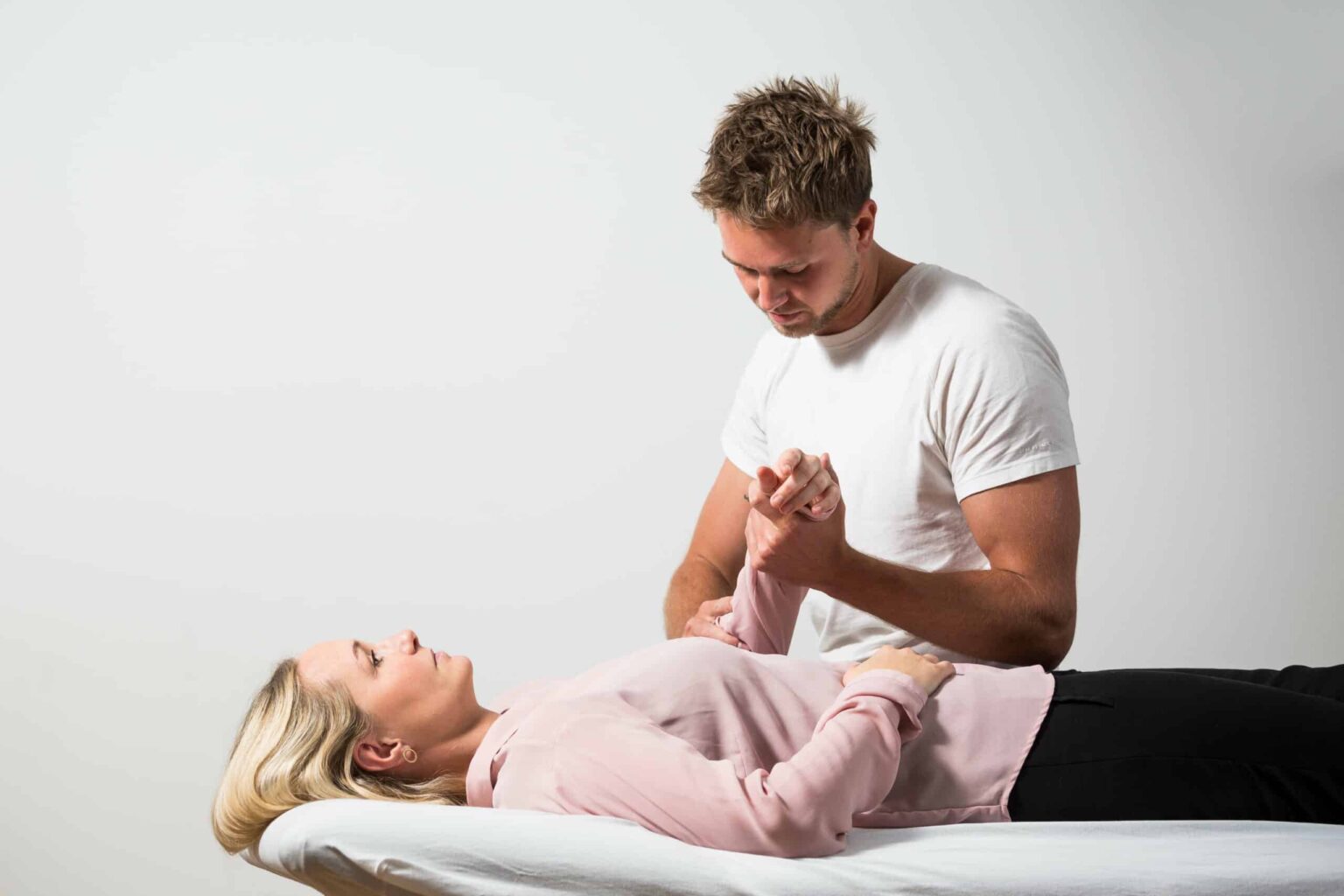We treat
Tailbone pain
Learn more about tailbone pain - also called coccydynia
What is coccydynia?
Tailbone pain, known as coccydynia or coccygodynia, is a pain condition caused by problems in the tailbone, from the transition between the sacrum to the coccyx, or the surrounding tissue structure that makes up the pelvic floor.
Jump to section [Vis]
What does the tailbone consist of?
The tailbone forms the lower part of the spine and is shaped like a small triangular pin, just below the sacrum. The joint between the sacrum and the tailbone is called the sacrococcygeal joint. Despite the minimal size of the tailbone, it has a range of motion of between 5-20 degrees, where it should move freely in a forward bend, backward bend and a side bend in both directions. For example, when we sit on a chair, the tailbone should move forward, between the buttocks, so that it is not exposed to direct pressure.
If, on the other hand, there is reduced mobility of the coccyx, it will be exposed to direct pressure and irritate the mucous sac that sits on the coccyx. This will contribute to creating inflammation or maintaining the inflammation that has occurred, for example, after a fall, so that the area does not calm down.
Furthermore, the tailbone should move to the left when sitting on the right buttock and vice versa. If the tailbone has difficulty moving to the side, it will also provoke pain when it is exposed to pressure.
Source: National Library of Medicine

The anatomical location of the tailbone
The large buttock muscle gluteus maximus originates on the back of the tailbone. In addition, the levator ani and coccygeus muscles attach to the front of the tailbone, which together with the ligaments; lig. sacrococcygeal, lig. sacrotuberous and lig. sacrospinous, form parts of the pelvic floor.
The function of the pelvic floor is to support and hold the pelvic organs: bladder, uterus, prostate and rectum in place and to form the base of the body. Furthermore, the coccyx, which is located close to the anus, has a great influence on its position in the pelvic floor and the pelvic floor muscles also help to control the passage of urine, air and stool from the bladder and rectum.
Causes of tailbone pain
There can be several causes of coccydynia, but the condition is most commonly seen in women. About 5% have it after a difficult vaginal birth, as the coccyx can be exposed to direct pressure or fracture depending on the size and position of the baby in the pelvis. Furthermore, a direct fall on the coccyx, for example a fall backwards, can also lead to pressure, fracture or a dislocated coccyx.
Another cause of coccydynia can be due to microtrauma, which can occur after repeated or prolonged sitting positions on hard, narrow or uncomfortable surfaces. Here, one’s BMI (Body Mass Index) will also influence the load on the tailbone when sitting, since the higher the BMI, the greater the load and pressure there will be on the tailbone. In addition, losing weight too quickly will also increase the load on the tailbone, as the fatty tissue around the buttocks will lose its shock-absorbing effect.
In addition to direct traumatic causes of the coccyx, more indirect causes such as the shape of the coccyx, infections such as osteomyelitis, hyper- or hypomobility of the sacrococcygeal joint, gastrointestinal and urogenital diseases, and degenerative joint and disc diseases, may be a further explanation for the development of coccydynia.

Symptoms of coccydynia
If you suffer from coccydynia, the pain will most often be localized just above the coccyx and is described as a piercing, sharp or throbbing pain. Some patients may experience pain in the buttock and hamstring region as irritation from the tailbone and surrounding muscles, e.g. levator ani, coccygeus and piriformis, can provoke radicular symptoms, involuntary strong muscle contractions or contribute to other neurological disorders.
Other symptoms may include pain when sitting, which will worsen when leaning back or sitting for extended periods of time. In addition, long bike rides, standing for extended periods of time, or getting up from a sitting position can also provoke pain in the tailbone. If you experience discomfort during defecation or intercourse, this may also be an indication of coccydynia.
Source: Sundhed.dk
How long can a tailbone hurt?
Most people with coccydynia will become pain and symptom-free within a few weeks to months. However, in a few people, the pain can develop into a persistent and disabling condition because the mobility of the tailbone may be affected. So if you have pain 2 weeks after a fall or 6 weeks after a fracture of the tailbone, it may be an indication that the mobility of the tailbone is not optimal.
As mentioned earlier, the cause may be due to the coccyx sac, which maintains the inflammation around the coccyx, or the ligaments in the pelvic floor are constantly exposed to stretching, which then reduces the mobility of the coccyx.

Diagnosing coccydynia
To diagnose patients with tailbone pain, a thorough and careful examination is required. The examination consists of a conversation with the patient to hear about the previous episode that triggered the tailbone pain. The pain can be acute after a trauma or have come on insidiously without a specific event.
The examination will then be followed by an external examination, i.e. an examination outside the body opening, including the genitals, sacrum, tailbone, etc. On the sacrum and tailbone, the mobility of the sacrococcygeal joint will be assessed and whether there are signs of tenderness and pain in the os coccygis (tailbone bone). Furthermore, X-ray examinations can help to detect fractures, dislocations, degenerative changes and, in rare cases, tumors of the tailbone.
If the external examination is not sufficient, an internal examination can be performed, i.e. through the vaginal opening or the anus, with the patient’s consent.
Treatment of tailbone pain
Around 90% of people with coccydynia become pain and symptom-free after conservative treatment (non-surgical treatment), and the majority of them manage without medical treatment.
Previous studies have shown that conservative treatment targeting coccydynia should have a multidisciplinary approach. So the doctor, osteopath, physiotherapist and other relevant professionals are involved in the treatment process, as the diagnosis can in some cases be complex and multi-factorial.
Typically, treatment will consist of pelvic floor rehabilitation, manual therapy and massage to help with spontaneous muscle contractions from the pelvic floor muscles and pain from the ligaments. In addition, treatment may also involve ergonomic adjustments, transcutaneous electrical nerve stimulation, psychotherapy, steroid injections and medication (NSAIDs).
In addition, a small percentage of patients with coccydynia are offered surgical treatment, a coccygectomy, in which the tailbone is amputated. However, current literature indicates that this treatment is not recommended, as the operation is associated with a high complication rate and risk of lack of pain relief. At the same time, more research is needed into new surgical techniques that can support the effectiveness of the surgical procedure.
If you start a course of treatment without experiencing sufficient relief after a few weeks, you should be referred to a coccydynia specialist, as this may indicate that the therapist is not knowledgeable about the condition.

Good advice for tailbone pain
It may be a good idea to stay active if you suffer from tailbone pain, as inactivity can often worsen your symptoms. In addition, you should avoid activities that provoke your symptoms in everyday life, and adapt it to your body’s ability.
Good advice:
- Vary your sitting and working position.
- Optimize your sitting position by avoiding hard surfaces or sitting in a reclined position, as this can worsen pressure on the tailbone.
- Relieve the pressure on your tailbone by using a tailbone pillow.
- Apply heat or cold to the tender area of the tailbone to relieve symptoms.
- Breathing exercises can be a good idea, as they help create movement and increase circulation to the pelvic floor.
- See a physiotherapist or osteopath who can treat the pain-causing structures through mobilization, stretching, etc., as well as guide and target your training specifically for you.
Osteopathy and tailbone pain
Osteopathy is a manual form of treatment where the therapist uses their hands as a tool during the treatment. Some therapists may specialize in gynecological treatment. Here, they deal with the female genitalia as well as pregnancy and childbirth, where the treatment focuses on tissues, vessels and nerves in relation to the female genitalia such as the vaginal opening, vagina, cervix, uterus, fallopian tubes and ovaries.
Often the treatment will start externally, that is, outside the body opening, and if this is not sufficient, internal techniques will be used vaginally or rectally with the patient’s consent. The use of internal techniques is due to the fact that the practitioner can more easily access the muscles around the abdomen, genitals, tailbone and nerve tissue, as in some cases it can be difficult to treat these structures on the outside of the skin. Furthermore, most osteopaths have a physiotherapeutic background and can guide and organize your training specifically according to your needs.
The purpose of the osteopathic approach is to restore the body’s balance by treating the restrictions that keep the body in its compensatory strategies.
It is therefore not only about increasing and treating the function and mobility of the coccyx locally, but also considering the body as a whole, where the organ system, the circulatory system, the nervous system, the hormonal system and the craniosacral system should also be brought into play. The body has various dependencies and if these systems harmonize, the body will be able to heal itself.

Exercises for tailbone pain
The three exercises below can help reduce your tailbone pain and increase circulation and mobility around the tailbone.
- Bring your knees out to the side and lower your upper body between your legs. Then place your forehead on the mat and your arms above your head in a relaxing position. Use your breathing to stretch your pelvic floor through deep breaths.
- Bring your left ankle over your right knee and pull your right leg up towards your chest until you feel a stretch in your left buttock. Hold the stretch for 20-30 seconds and repeat the exercise for 2-3 rounds.
- Lie on your back and let your hips point outwards, by placing something under your knees. Breathe deeply down towards your pelvic floor so that it expands downwards. As you exhale, relax. Repeat the exercise for 3-5 minutes.
The exercises should be performed daily or as needed. If you experience worsening of the exercises afterwards, you should adjust the duration, number or replace the exercise with something else.

Often related injuries
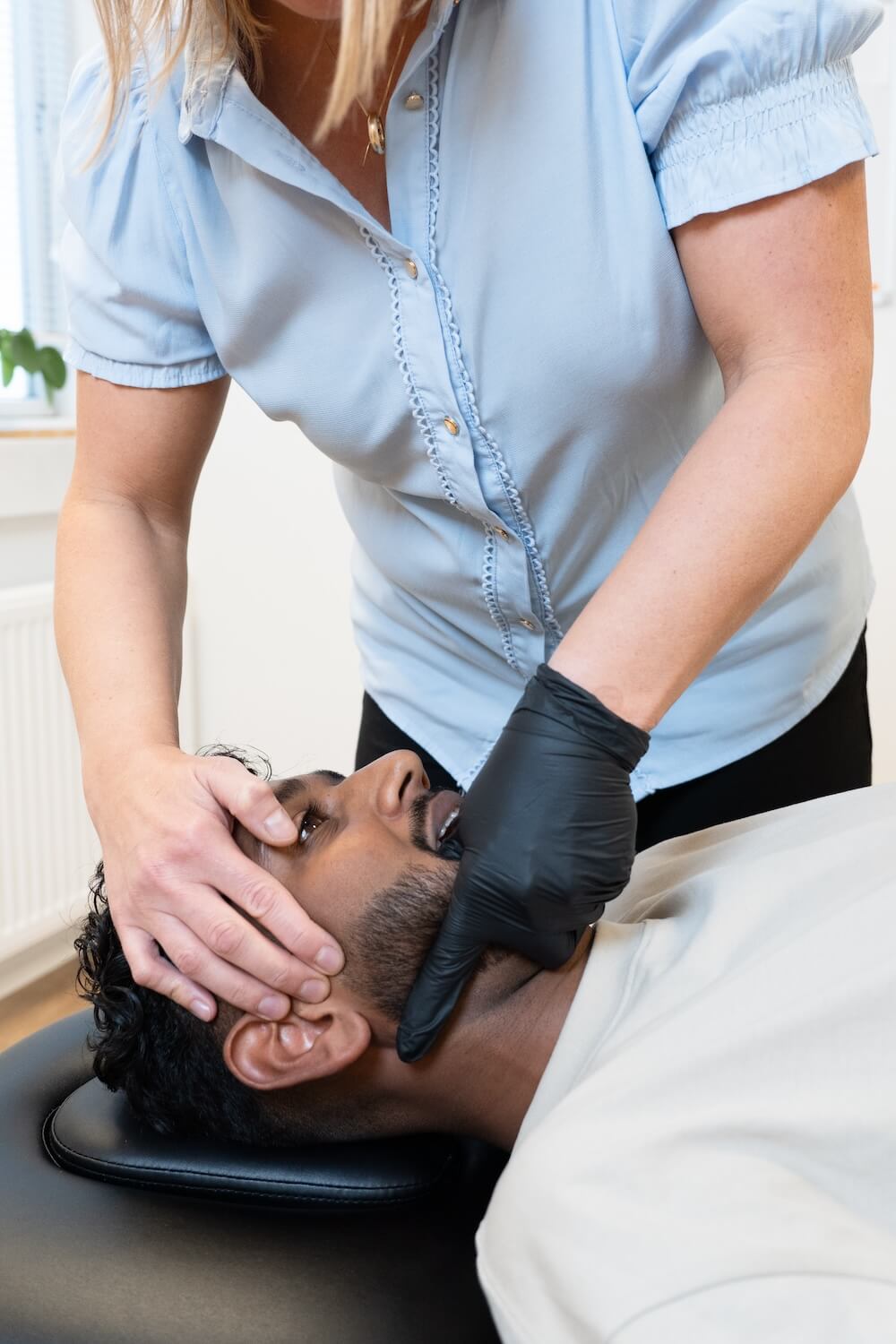
Kissing disease
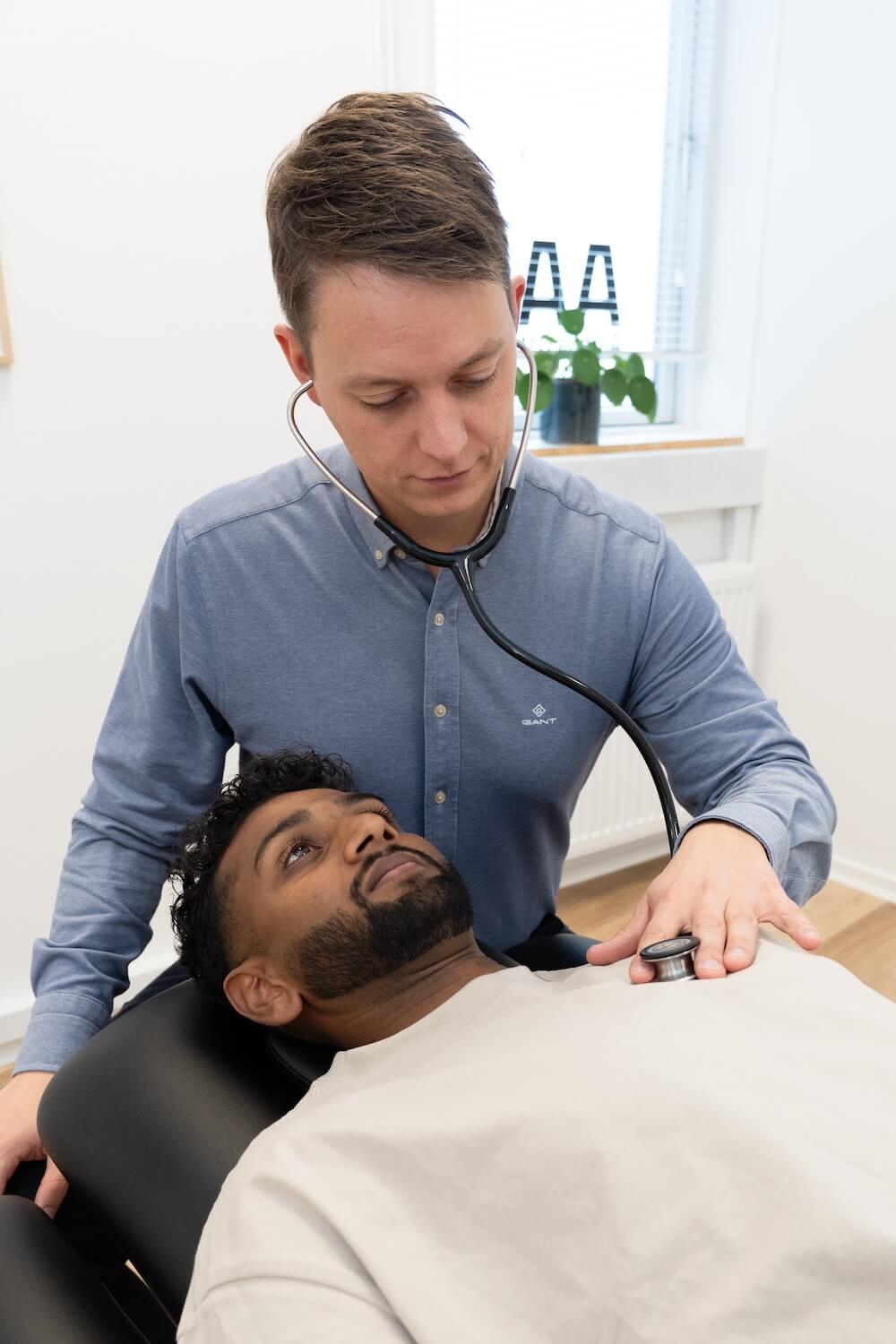
Diabetes mellitus
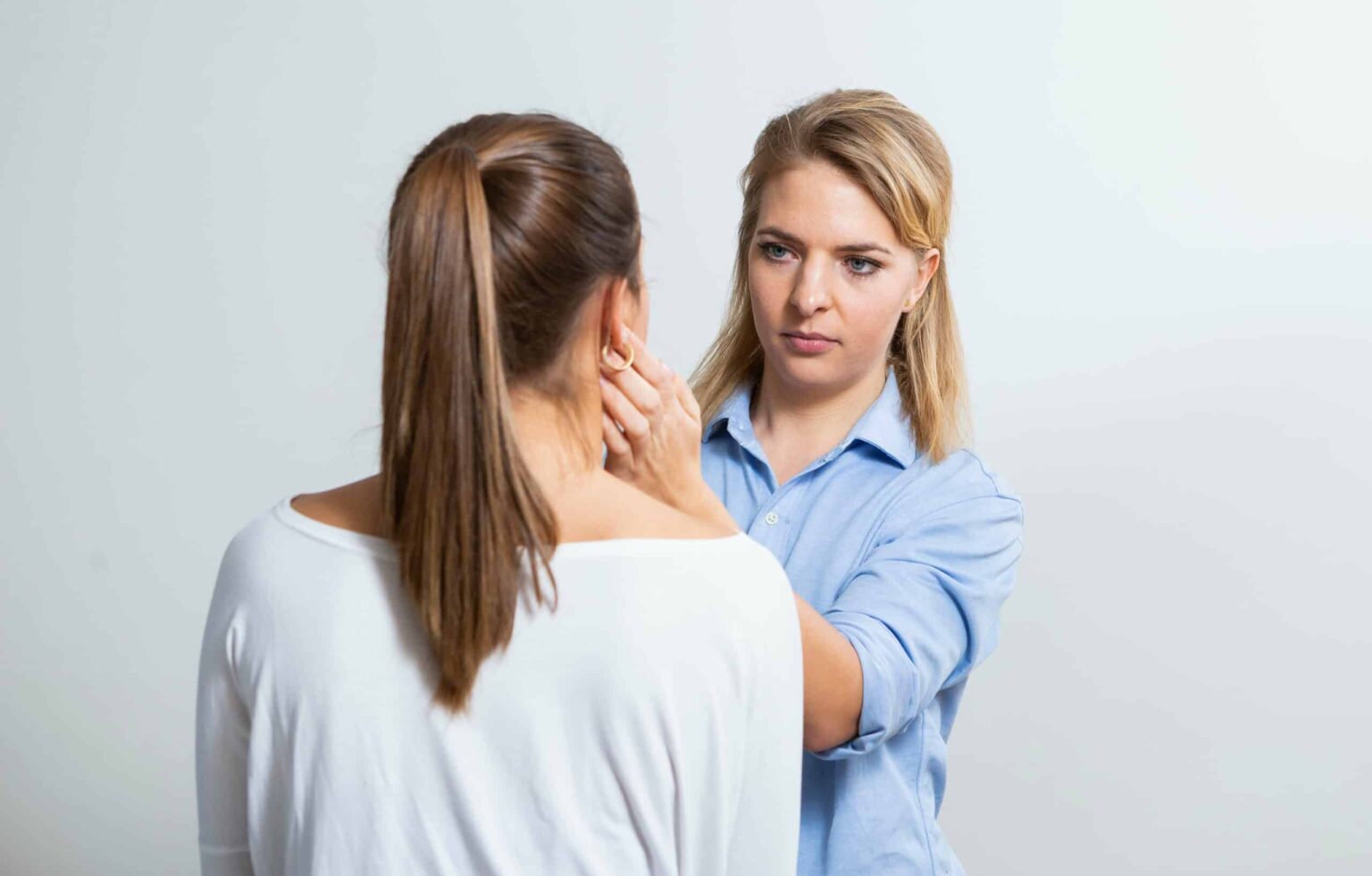
Eye inflammation

Padel injuries

Sedentary work
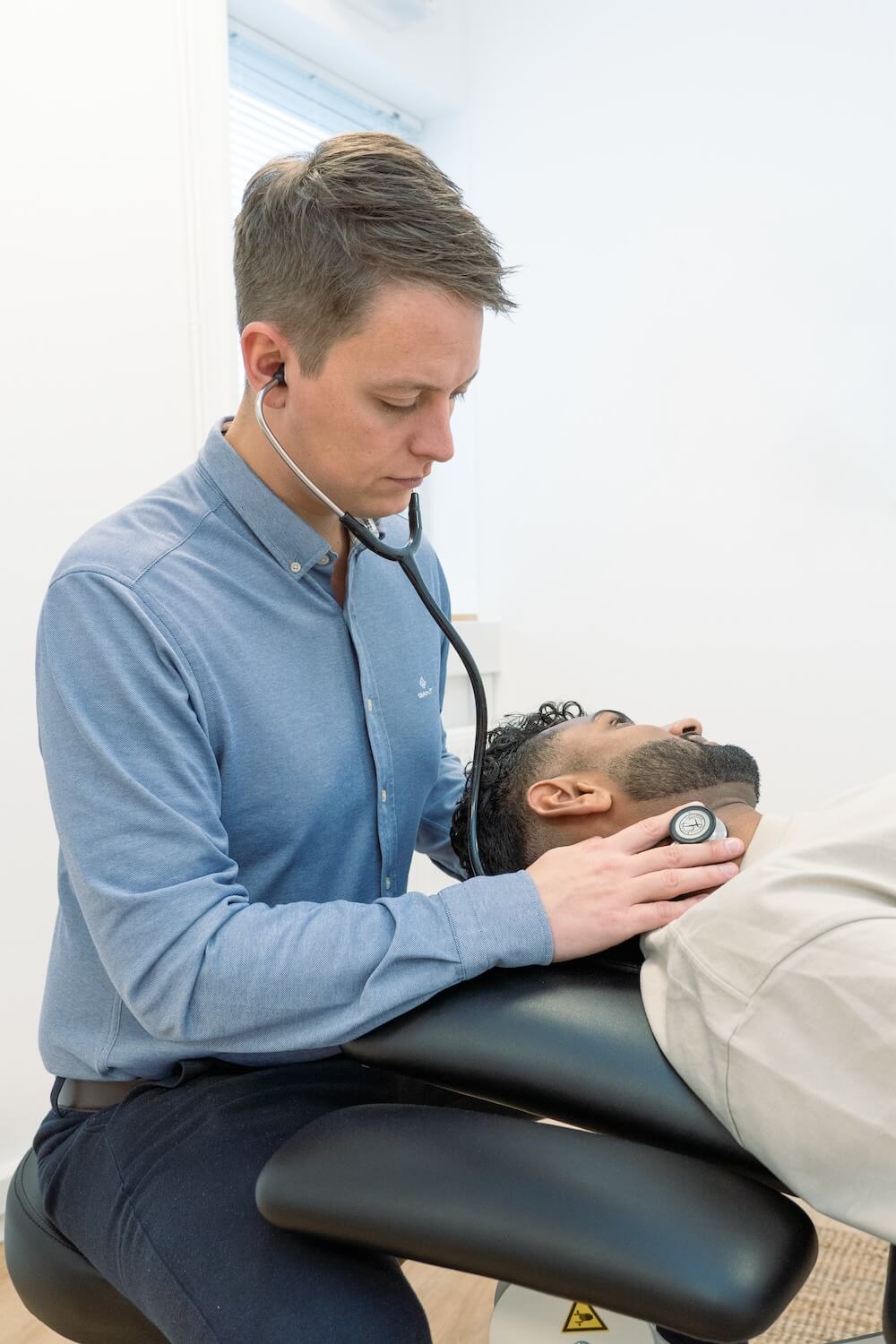
Nicotine and exercise
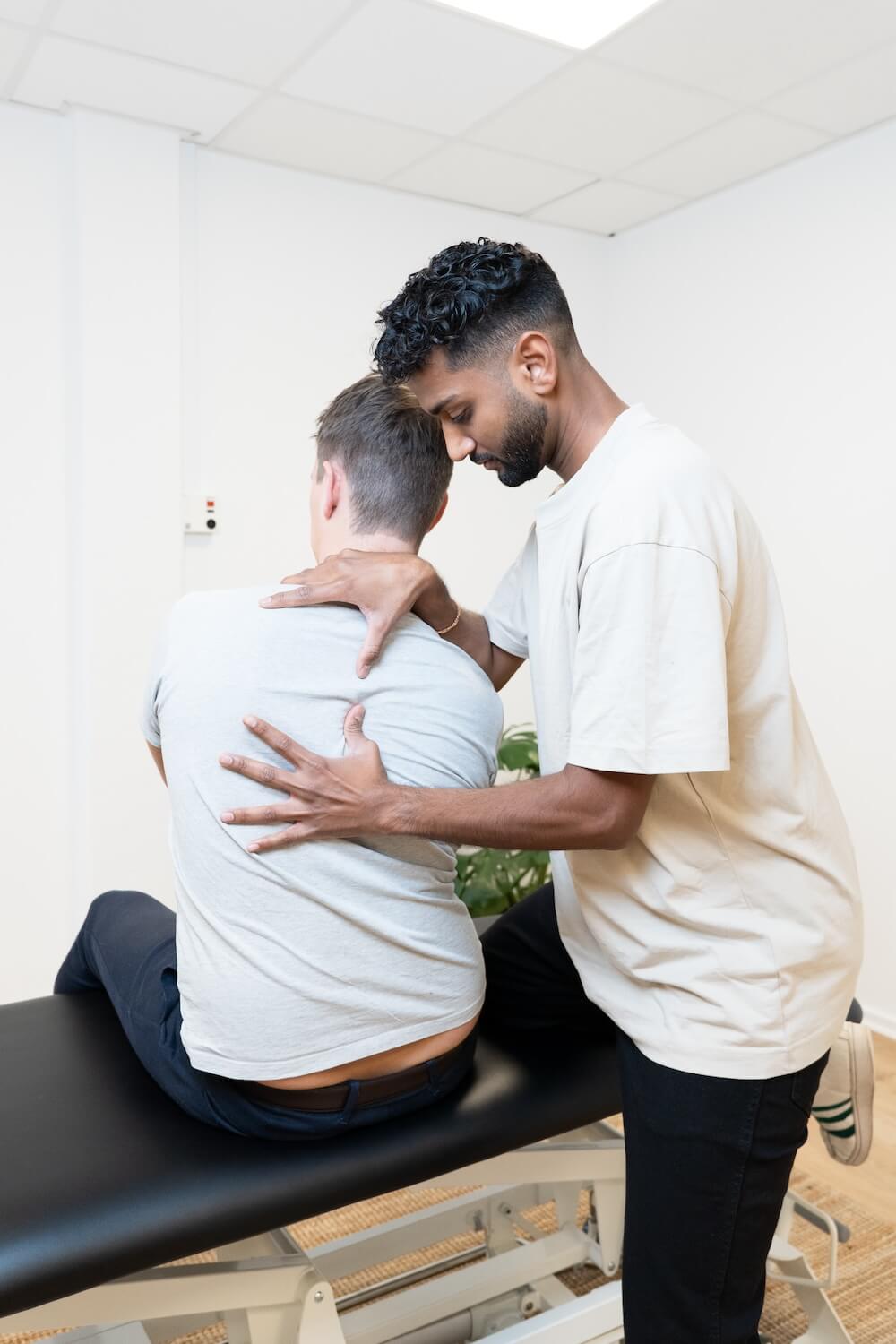
Shingles
